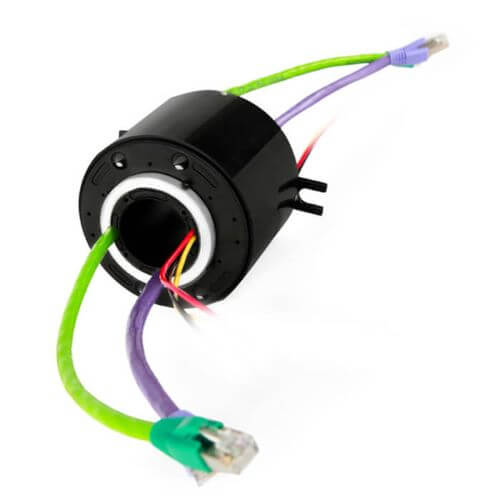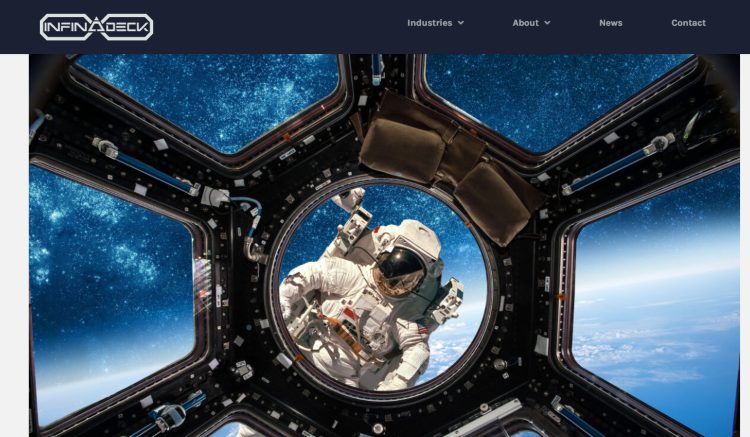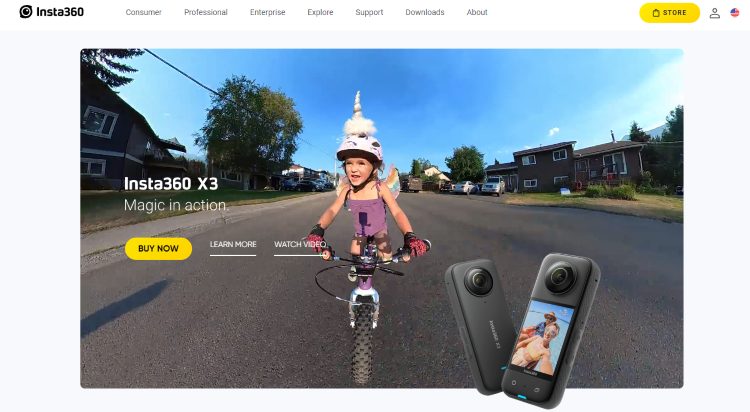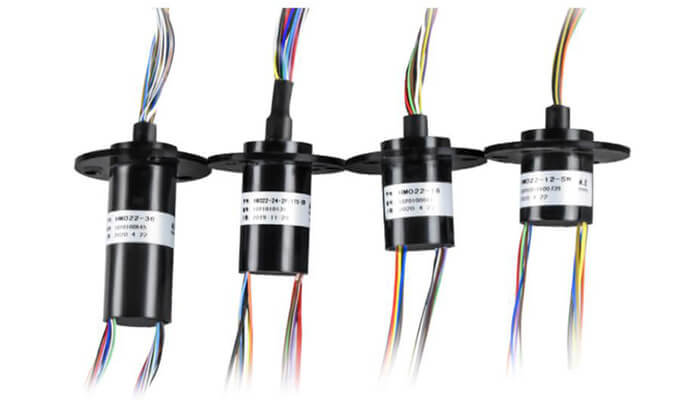In our rapidly advancing digital age, an unexpected component is quietly revolutionizing the realm of Virtual Reality (VR) technology: the slip ring. This compact, unassuming electromechanical device is crucial in driving VR experiences to increasingly realistic heights.
Slip rings are essentially power conveyors—they enable the transfer of electrical signals from a stationary source to a rotating object. This seemingly simple operation holds the key to various applications, such as wind turbines, electric car charging stations, and more infinitely complex systems like VR technology. In VR systems, slip rings assume a pivotal role by ensuring the smooth, uninterrupted transmission of data and power.
Further, the slip ring’s contribution to VR is not just due to its inherent function, but also its capability to adapt to VR’s demands. The necessity for an immersive VR experience means having real-time, seamless interactions within the virtual space. Imagine turning your head while wearing a VR headset and experiencing a lag due to disrupted data transmission. Such disconnection would shatter the immersive illusion, highlighting why a device like slip rings that can transmit data while rotating 360 degrees is so crucial.
Throughout this article, we will deeply explore the role of slip rings in VR technology, from their basic functions to the detailed considerations needed when implementing them into a VR system. We will delve into innovative VR slip ring designs and discuss real-life applications, answering frequently asked questions. We will also take a peek into the promising future of this essential but often overlooked component.
So, as the world becomes more connected through emerging digital landscapes, let’s focus our attention on an often unsung hero—the slip ring.
Slip Rings Application in VR
Fundamentals of Slip Rings
To genuinely appreciate the role of slip rings in VR technology, one must first understand their fundamentals. Underneath their small and compact design, slip rings perform a task of profound simplicity yet tremendous importance: they transfer power and data from a stationary structure to a rotating one. That’s it. But it’s this simple operation that makes them indispensable in a wide array of applications.
How do slip rings operate? Imagine a simple electrical system – you have a power source and a device that requires power to spin, like a fan. A direct connection, say through a wire, would work but only to a limit. The moment the fan starts rotating, the wire twists, eventually snapping or disconnecting the power. Here’s where a slip ring comes in, allowing for ongoing power connection despite the 360-degree rotation. The power is received from a stationary ‘brush’ that maintains contact with the rotating ring—hence no interruptions, no disconnections, just smooth rotation.
Now take this fundamental role of slip rings and apply it across multiple industries and applications. From the turbines of windmills capturing renewable energy to the antennae of satellite systems making worldwide communications possible, slip rings discreetly act as the heart, pulsing life into these machinery.
And now, they found a new home—Virtual Reality technology. In VR systems, slip rings are responsible for data transmission between the stationary and rotating parts, particularly in VR headsets, enabling users to enjoy 360-degree immersive experiences without interruptions. The very essence of VR lies in the creation of a seamless virtual environment that engages users realistically, and slip rings play a vital role in translating this essence into reality.
But it’s not just their conventional role; slip rings have shown an adaptive resilience to fit into VR’s unique demands. These include the need for swift, low-noise data transfer, compactness due to wearability factors, durability, and cost-effectiveness. In the following sections, we will further explore their essential role, their innovative designs, and the promising future of slip rings in Virtual Reality technology.

Importance of Slip Rings in VR Technology
Stepping into the world of Virtual Reality (VR), one begins to understand why the seemingly simple slip ring can make all the difference. VR technology seeks to engage users in a simulated environment that approximates the real world, a task requiring flawless communication between the real and virtual facades of the experience. It’s in this delicate exchange of information that slip rings play a crucial role.
In VR systems, particularly in VR headsets, slip rings are responsible for transmitting data, without interruption, between stationary and rotating parts of the device. This continuous data flow is necessary for enabling users to interact naturally and freely in the simulated 3D space. Whether the user turns to look at a virtual waterfall or lifts a hand to grab a virtual object, the actions must manifest in the VR world instantaneously and accurately – an outcome slip rings contribute to achieving.
Additionally, slip rings tackle one of the biggest challenges in VR tech: maintaining seamless data transmission while allowing 360-degree rotation. Without slip rings, connecting wires would twist and eventually disconnect, causing latency or worse, cutting off the virtual scenario altogether.
However, integrating slip rings into VR tech isn’t as simple as merely plugging them in. Several unique requirements emerge when using slip rings within the VR context. One such requirement is the need for swift and low-noise data transmission. VR experiences thrive on high-resolution visuals and sound, which require swift data transmission. Any delay or ‘noise’ could snap users out of the immersive experience.
Another requirement is compactness. As VR headsets are wearables, they need to be as light and unobtrusive as possible. Adding bulky components is not an option, requiring slip rings to be small and lightweight.
Finally, durability is a critical need. To withstand extensive use while maintaining consistent performance, the slip rings used in VR systems need to be highly durable.
As we delve deeper into this article, we will explore how these unique needs are effectively addressed in the selection and design of slip rings for VR tech.
Key Considerations When Selecting Slip Rings for VR
As we’ve defined the importance of slip rings in creating immersive VR experiences, the next step lies in understanding how to choose the right slip ring— a crucial task that goes beyond basic specifications. Here’s a rundown of key considerations that will guide the process:
High-Speed Data Transmission
The very essence of a VR experience lies in the illusion of real-time interaction with virtual environments. This seamless immersion relies heavily on data—high-definition images, 3D audio, and tactile feedback—all of which need to be transmitted instantaneously.
These elements require swift, low-noise data transmission. Any lag or distortion can interrupt the immersive VR experience and break the illusion. Hence, when selecting slip rings for VR, the key consideration is high-speed data transmission capabilities. Furthermore, the data process should be low-noise to maintain the audio-visual integrity of the VR experience.
Compactness
The second factor to consider is the size of the slip ring. Given that most VR systems, particularly headsets, are wearable devices meant to be used for extended periods, using large, heavy components isn’t feasible. Large slip rings could add to the weight of the VR device, making it uncomfortable for the user and disrupting the VR experience.
Therefore, when choosing slip rings for VR devices, manufacturers must look for offerings that, despite their small size, do not compromise on performance.
Durability
As components that operate with moving parts and handle continuous data transmission, slip rings are subject to wear and tear. The longer and more frequent the use of the VR device, the more strain the slip rings endure.
The last thing a user would want is for their VR experience to be cut short due to a failing component. Therefore, it is essential to consider the durability and lifespan of the slip ring. It should withstand extensive use while maintaining consistent performance.
Economic Efficiency
Lastly, while manufacturers aim to provide the best VR experience, economic efficiency remains crucial. The VR market is highly competitive, and balancing high-quality, immersive experiences with cost-effectiveness can make a difference in being successful in the market.
While high-performance slip rings may come at a higher price, manufacturers have to consider the balancing act between ensuring premium VR experiences and maintaining affordability for the end users.
In conclusion, the careful selection of slip rings is a vital step in crafting engaging VR experiences. By taking into account factors such as high-speed data transmission, compactness, durability, and economic efficiency, manufacturers can effectively harness the benefits of slip rings and elevate their VR offerings.
Innovations in VR Slip Ring Design
The skyrocketing growth of the VR industry has pressed manufacturers to continuously innovate, particularly in the design and technology of VR-optimized slip rings. With the premium set on compactness, efficiency, durability, and cost-effectiveness, leading slip ring manufacturers are redefining the limits of these essential components.
Though the specifics of these innovations often remain well-guarded trade secrets, a few “star qualities” tend to shine through in the industry-leading products.
For instance, Moflon, a leading slip ring manufacturer, developed a number of compact slip rings specifically for VR devices. One of these products, the MOFLON MT Slip Ring, boasts a compact design with a diameter of only 12.5mm. Despite its small size, it offers high-speed data transmission and is designed with patented technologies to ensure durability and longer life span, addressing some of the crucial challenges in VR tech.
Another example of these innovators is Stemmann-Technik, known for their long-lasting and reliable slip rings. They’ve upped their game in the VR field with design adaptations that prioritize low electrical noise—critical in maintaining the integrity of audio-visual VR experiences.
Then there’s Senring, which has made strides in economic efficiency with its collection of slip rings catering to the VR sector. Their unique selling point lies in delivering high-quality slip ring performance at competitive prices, striking a commendable balance between quality and affordability.
These manufacturers, among others, are pushing boundaries, showing that even something as essential yet often overlooked as slip rings can be a defining factor in a VR device’s quality and immersion potential. By keeping up with these rapidly evolving innovations, VR tech does not just adapt; it enhances its promise of delivering increasingly realistic, immersive experiences.
Slip Ring Applications in VR: Case Studies
To better appreciate the impact of slip rings in the realm of VR, let’s take a look at real-life examples demonstrating how specific slip ring types contribute to the quality and reliability of VR experiences. Examining these case studies will help us understand the essential role of slip rings in a tangible context.
360-degree VR Treadmills
360-degree VR treadmills allow users the freedom to walk, run, and maneuver in any direction within virtual environments. In these systems, slip rings play a vital role in maintaining data transmission between the rotating platform and the stationary base as the platform responds to the user’s movements.
One such treadmill, made by Infinadeck, employs specialized compact slip rings that enable continuous, high-speed data transmission, making the user’s movements in the virtual world appear seamless. In this application, slip rings not only maintain the integrity of the VR experience but also make it possible to have realistic, unconstrained movement that enhances immersion.

VR Motion Simulators
VR motion simulators, such as racing or flight simulators, aim to recreate the physical sensations of driving or flying through realistic motions. Part of their success lies in pairing high-definition VR visuals with consistent, synchronized data transfer.
These simulators often feature moving parts, such as steering wheels, which rely on slip rings to transfer data continuously during rotation. D-BOX is a leading brand that manufactures highly advanced VR motion simulators. Their designs often incorporate high-speed, low-noise slip rings to transmit data accurately and swiftly, thereby enhancing the real-time sensation of an immersive VR environment.

Virtual Reality Camera Rigs
Virtual Reality Camera Rigs equipped with multiple cameras capture 360-degree panoramic video. They require wiring to transfer the power and data from cameras to stationary control systems.
A prime example is Insta360, which offers the Insta360 Titan— a VR camera rig featuring 8 lenses shooting high-resolution 360-degree footage. In this case, slip rings provide consistent data transfer while the rig seamlessly rotates to record the full panoramic view. This ensures uninterrupted video capture for creating high-quality VR experiences.

By exploring these real-life applications, we can better understand the integral role that slip rings play in various VR scenarios. From continuous data transmission to optimizing simulations or video capture, slip rings are quiet heroes in the pursuit of immersive VR experiences.
The Future of Slip Rings in VR Technology
As we move into an era where VR seeps into various sectors, from gaming and entertainment to training and education, the demand for more robust and efficient slip rings is becoming increasingly pertinent.
Advanced Designs for Better Performance
Future advancements in slip ring technology will likely revolve around superlative performance without sacrificing compactness. Fueled by the race for miniaturization in VR tech, slip rings will continue to evolve to meet the demand for smaller, lighter, more comfortable VR gear. Yet, these devices need to maintain, or even exceed, their current capabilities in terms of high-speed, low-noise data transmission.
Moreover, advancements could lean towards the integration of more channels into these compact slip rings, facilitating more complex VR systems that require multiple data transfer points. This up-gradation will help meet the increasing desire for multi-sensory VR experiences.
Durability and Maintenance
Durability, lifespan, and low maintenance requirements will continue to be critical aspects, especially for commercial VR applications where devices experience long hours of usage. Future slip ring technology could incorporate more wear-resistant materials and innovative designs to extend the lifecycle and reduce service interruptions.
Influence of Emerging Tech Trends
Data speeds and volume requirements are set to rise with trends such as 4K, 8K, and above resolutions, higher frame rates, and real-time rendering for immersive VR experiences. To stay in step with these demand surges, slip rings will need to handle even higher data rates.
Moreover, haptic technology is on the horizon as the next game-changer for VR, making the users not just see but feel the virtual environment. With this shift, slip rings will face the challenge of transmitting not just audio-visual data, but also the sophisticated feedback data required for interactive haptics systems.
In conclusion, the future of slip rings in VR technology holds exciting potential as these critical components evolve in tune with the rapid advancements in VR. The collaboration between VR system engineers and slip ring manufacturers will undoubtedly unlock new levels of immersive experiences, truly revolutionizing the way we interact with virtual environments.
Conclusion
The significance of slip rings in the progression of VR technology cannot be overstated. As we anticipate further growth in VR applications, the focus on slip ring technology increases in kind—leading us towards a future where VR is even more immersive, bringing us a step closer to the “reality” in Virtual Reality.
FAQs About Slip Rings in VR
The intricate dynamics of slip rings and their role in VR technology often invite many questions. To help users better understand, we’ve compiled some of the most frequently asked questions and provided straightforward answers.
Q1: Can a slip ring impact the performance of a VR system?
A: Absolutely. The slip ring ensures seamless data transmission between the stationary and rotating parts of the VR device. Any lag or data loss in this exchange could affect the overall performance and user experience.
Q2: How often do slip rings in VR devices need maintenance?
A: The maintenance requirements of slip rings depend on the specific model and manufacturer’s recommendations. However, to ensure optimal performance, users should regularly check for any signs of wear and tear or reduced performance.
Q3: Is it expensive to replace a slip ring in a VR device?
A: The cost to replace a slip ring can vary widely based on the specific type, model, and manufacturer. That said, a high-quality slip ring typically has a longer lifespan, and investing in a durable slip ring can save money over time by reducing the frequency of replacements.
Q4: What does the future look like for slip rings in VR technology?
A: The future of slip rings in VR technology is promising. As VR technology advances and needs change, improvements in slip ring design and technology will follow. We can expect more efficient, durable, compact, and cost-effective slip rings that deliver even better VR experiences.
See What We Can Do

